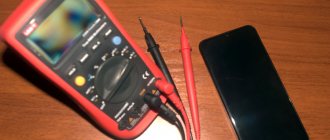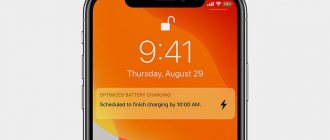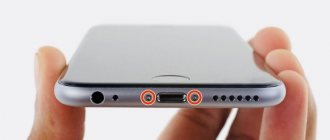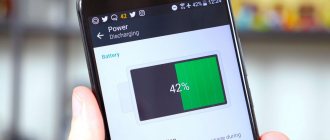| Everything about iPhone batteries - capacity, optimal condition, how to check the battery and extend its service life, autonomy of individual models. |
With Apple's iPhone, it's fair to say that the battery is a mystery box. Unlike some of its competitors, it is not removable, so you should be sure that what you are getting is really good. When buying a used iPhone, a good battery is just as important as a good appearance.
Luckily, in this guide, we'll answer some frequently asked questions about iPhone battery replacement, from understanding good capacity levels to typical iPhone battery performance across different models.
Everything mentioned in this guide applies to all current and latest Apple smartphone models. Where appropriate, we have indicated how different models work with batteries. Overall, however, this comprehensive iPhone battery guide will be useful whether you're looking to buy an iPhone 7 or an iPhone 12.
When the battery is swollen
Swollen battery on iPhone 8 Plus iPhones are equipped with lithium-ion batteries.
Such batteries operate on chemical reactions of electrodes. Due to the disruption of reactions, the phone battery heats up, swells and explodes. This happens when the phone is used incorrectly. A swollen iPhone battery must be replaced immediately, as the situation may worsen.
Poor quality charger
Relevant for owners of iPhones released after October 13, 2020. iPhone SE (2020), iPhone Xr, iPhone 11, iPhone 12, iPhone 12 mini, iPhone 12 Pro and Pro Max models no longer include a charger in boxes. An Apple power adapter in the official store costs from 1,790 rubles. Users save money and buy chargers from other companies. A low-quality charger supplies voltage unstably - the battery overheats. Overheating causes the battery to swell. In rare cases, it may catch fire or explode.
If you are using a third-party USB adapter, choose a device with surge protection.
Temperature during use
Apple recommends using iPhone at temperatures from 0 to +35 °C. Do not leave your iPhone in direct sunlight in the summer and do not carry it in the outer pockets of clothes in the winter - this will equally harm the device.
When battery capacity is less than 80%
On iPhones with iOS 11.3 and later versions, you can check the battery status in the settings. The information is in the menu Settings - Battery - Battery status . The maximum battery capacity is shown as a percentage. This is the current capacity compared to the new device.
If the maximum capacity is less than 80%, it is time to replace the battery. Using the device with such a charge indicator is uncomfortable. According to our service clients, an iPhone with a battery capacity of less than 80% discharges twice as quickly during active use as a device with a new battery.
Additionally, due to the low capacity percentage, the performance management feature is enabled.
Peak Performance
When checking the maximum battery capacity, pay attention to the Peak Performance line.
Your iPhone may turn off unexpectedly. This often happens if the battery is old, cold or overheated. the message “ This iPhone turned off unexpectedly... ” below Peak Performance
Message about unexpected shutdown of iPhone
The iOS operating system on iPhone 6, iPhone 6 Plus, iPhone 6s, iPhone 6s Plus, iPhone SE (1st generation), iPhone 7 and iPhone 7 Plus manages peak performance and controls device performance.
When the device enters peak performance control mode, iPhone programs run slower:
- applications take longer to load;
- frame rate decreases when scrolling;
- The backlight brightness decreases;
- The speaker volume decreases.
On iPhones with iOS 12.1 and later, the user can control this system himself. When a message appears about your iPhone turning off unexpectedly, you need to click “ Turn Off...” . Now the device will not reduce performance. When such a message appears, it’s time to change the battery in your iPhone, otherwise it will either “slow down” or turn off itself.
Discharged or not
This will sound trivial, but first you need to understand whether the device itself is discharging or you are discharging it. To do this, simply refrain from active use for a while and monitor the charge level. It is best to fully charge the device and leave it overnight, after taking a screenshot of the current charge level. Don't forget to turn off notifications as well to eliminate the possibility of being drained by too many pushes.
Check the charge level in the morning. If it has not changed or dropped by a couple of percent, then everything is fine with the battery and the accelerated discharge is caused by active use. If the charge has dropped by more than 10%, something is still discharging it. In this case, move on to the next point.
When more than 500 charging cycles have been used
The iPhone battery remains at 80% of its maximum capacity after 500 battery charging cycles. The figure is arbitrary; no one can name the exact number of cycles. This is due to the system by which the iPhone counts cycles. One cycle is the total discharge of the battery by 100%. Illustrated example:
You can check charge cycles using analytics data directly in your iPhone.
Go to Settings - Privacy - Analytics and Improvements .
- Activate the Share iPhone Analytics . If the function has not been enabled, data on the battery status can only be obtained the next day after activation.
- Go to the Analytics Data .
- On the data page, find a line called log-aggregated .
- Long text will appear. Copy the text by holding it on the screen. Paste text into the Notes .
- In the Find in note , enter BatteryCycleCount . The number between the words in triangular brackets is the number of charge cycles for your iPhone’s battery.
To check iPhone charge cycles through a computer running MacOS, the CoconutBattery . Select your iOS device from the top and the number of cycles will be displayed at the bottom of the screen.
A similar program for checking charging cycles through a computer running Windows is iTools .
When there are more than 500 charge cycles, it is recommended to change the iPhone battery.
When iPhone shuts down on percent
Control chip on the iPhone battery
There is a chip installed on the iPhone battery. The chip analyzes the battery performance when fully charged and fully discharged, so it knows the battery capacity. Then it builds a graph and uses it to determine how many percent the battery is charged at a particular moment. When a chip breaks, it produces incorrect data. For example, if the iPhone suddenly turns off at 30% charge, the problem is in the chip. A faulty chip believes that there is still a percentage of charge and does not warn the user that the device is low.
Due to a faulty control chip, the battery shows an incorrect charge percentage:
- the charge percentage changes from 10% to 40%, then to 5%, etc.;
- The iPhone charges from 5% to 100% in a few minutes;
- The iPhone runs on 1% charge for several hours.
All this indicates problems with the battery or control chip. When this happens, you need to replace the battery on your iPhone. Otherwise, the device will sooner or later not turn on at all or stop charging.
What is a “recharge cycle” and why is it important?
One cycle is when you discharge your iPhone from 100% to zero. This can be done either at one time or several times. Example: within a day the battery was discharged by 75%. You charged it to 100% and continued using it. One charging cycle will end when you have used up another 25% of the charge (“yesterday’s 75% + today’s 25%).
What are we talking about? The iPhone battery naturally has a resource. After 500 full charging cycles, the battery capacity of an Apple smartphone will decrease by 15-20%. In practice, 500 charging cycles is 1.5-2 years of smartphone operation. After about 3-4 years, the battery capacity will correspondingly decrease by 50% of the value that the iPhone had out of the box. That’s when it makes sense to think about replacing the battery - after all, you will probably notice that your iPhone, for example, no longer “survives” until the evening and lets you down at the most necessary moment.
♥ ON TOPIC: iPhone tracks all your movements (places visited): where to watch it and how to turn it off.
When iPhone turns off in sub-zero temperatures
Here, too, it’s all about the charge cycles and service life of the iPhone. A new battery, where the conditional 500 charge cycles have not been used up, works properly even in the cold. But if the device is several years old, lithium-ion batteries lose their properties. At sub-zero temperatures, the battery of an old iPhone performs worse - it discharges faster or turns off spontaneously.
When the iPhone turns off at low temperatures, you need to change the battery - this means that its performance has deteriorated and its resource has been noticeably reduced.
How to Extend Your iPhone's Battery Life and Performance
Apple has tried to extend the battery life of its phones through something called performance throttling, or performance management, which caused controversy a few years ago. Performance Management reduces your phone's performance on your behalf to keep your iPhone running and saving battery. You can turn it off manually, but if you do this, your iPhone's battery will drain very quickly as the iPhone will be running close to its maximum capacity.
Instead, it makes sense to take these few simple steps that can extend your phone's battery life, courtesy of Apple:
- Stay on the latest iOS update. Every major update includes new features to preserve and extend battery life.
- Try to keep your phone at a temperature between 16 and 22 degrees Celsius on average. Anything higher or lower can damage your lithium battery.
- Avoid excessive heat when charging. Some cases or surfaces can cause your phone to heat up, which can damage your battery. Check it while charging to make sure it has cooled down.
- Keep your phone half charged. Draining the battery completely can cause it to become deeply discharged, causing significant damage.
- Turn on auto brightness. The brightest screen settings tend to drain your battery quickly, forcing you to go through charging cycles quickly and drain your battery.
- Check your background activity in Settings > General > Background Update. Too many apps running in the background drain your battery.
When the battery status is not displayed
After replacing the battery, the iPhone does not display the battery status in the settings. The error occurs on some models.
✅ No error
- iPhone 6
- iPhone 6 Plus
- iPhone 7
- iPhone 7 Plus
- iPhone 8
- iPhone 8 Plus
- iPhone X
❌ There is an error
- iPhone Xs
- iPhone Xs Max
- iPhone XR
- ...and newer ones
The reason is again in the battery management chip. When, after replacing the battery, it is not flashed for a specific device, an error appears. It is necessary to replace the capacitive element and re-solder the cable from the old battery.










